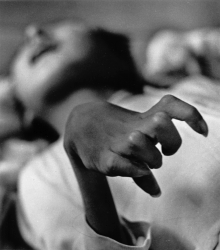Japan’s Nuclear Refugees, Still in Limbo
By MARTIN FACKLER
Tens of thousands of evacuees from the area around the Fukushima nuclear
plant are in emotional and legal limbo as the cleanup limps along.
| Minamata disease | |
|---|---|
| Classification and external resources | |

The crippled hand of a Minamata disease victim (A. M. Smith)
|
|
| ICD-10 | T56.1 |
| ICD-9 | 985.0 |
| MedlinePlus | 001651 |
Minamata disease was first discovered in Minamata city in Kumamoto prefecture, Japan, in 1956. It was caused by the release of methylmercury in the industrial wastewater from the Chisso Corporation's chemical factory, which continued from 1932 to 1968. This highly toxic chemical bioaccumulated in shellfish and fish in Minamata Bay and the Shiranui Sea, which, when eaten by the local populace, resulted in mercury poisoning. While cat, dog, pig, and human deaths continued for 36 years, the government and company did little to prevent the pollution. The animal effects were severe enough in cats that they came to be called "dancing cat fever."[1]
As of March 2001, 2,265 victims had been officially recognised (1,784 of whom had died)[2] and over 10,000 had received financial compensation from Chisso.[3] By 2004, Chisso Corporation had paid $86 million in compensation, and in the same year was ordered to clean up its contamination.[4] On March 29, 2010, a settlement was reached to compensate as-yet uncertified victims.[5]
A second outbreak of Minamata disease occurred in Niigata Prefecture in 1965. The original Minamata disease and Niigata Minamata disease are considered two of the Four Big Pollution Diseases of Japan.
沒有留言:
張貼留言